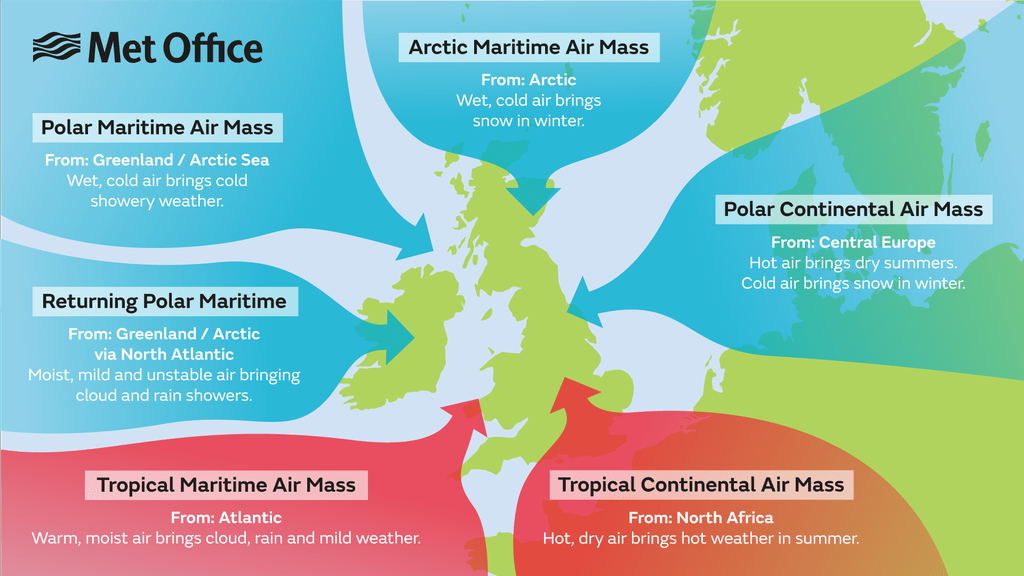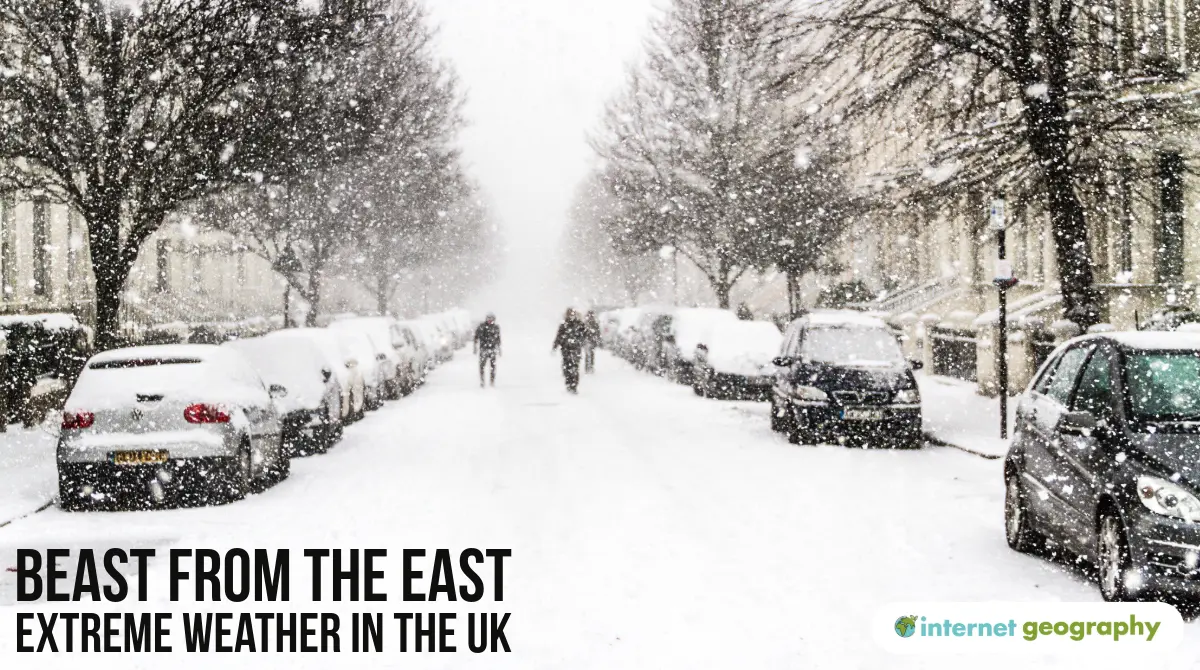Beast from the East – Extreme weather in the UK
What caused the Beast from the East?
Under normal circumstances, winters in the UK are mild compared to those in some places on the same latitude, due to the jet stream, a warm air mass that travels across the Atlantic Ocean from Mexico to the UK. However, in February 2018, a meteorological event known as stratospheric warming disrupted the jet stream, allowing cold winds from Russia to travel as far as the UK.
At this time of year, a polar vortex – a large mass of cold air – typically forms in the upper atmosphere, also known as the stratosphere. This vortex is what usually causes air to move from west to east. However, there was a considerable rise in air temperature of around 50°C 18 miles above the Earth at the North Pole. Sudden stratospheric warming caused a weakening of the jet stream, leading to a change in the direction of the winds approaching the UK from west to east to west, allowing a cold air mass (polar continental air mass) from Russia to cover the UK.

Air masses affecting the UK – source: Met Office
When the air left Siberia, Russia, it was around -50°C. By the time it reached the UK, it was just below freezing, though this was still cold for the time of year. Additionally, the air mass picked up water over the North Sea, resulting in heavy snowfall when it reached the UK.
The Beast from the East meets Storm Emma
Storm Emma was a weather system originating from the Azores and travelling north to the UK. On 1st March 2018, the weather front brought blizzards, gales and sleet as it hit the cold air brought down by the Beast from the East. As a result, the Met Office issued a series of red warnings for southern England. Storm Emma would instead have caused wet and windy conditions without the cold air if temperatures were closer to average.
Primary impacts of the Beast from the East
- Ten people died
- Up to 50cms of snow fell on high ground
- Rural (countryside) areas experienced temperature lows of up to -12°C
Secondary impacts of the Beast from the East
- Hundreds of schools were forced to close
- Thousands of schools were closed across the UK, including over 125 in North Yorkshire and more than 330 in Kent, and hospital operations were cancelled.
- Many rail services were cancelled.
- British Airways cancelled hundreds of short-haul flights from Heathrow, and London City Airport also cancelled many services.
- The National Grid issued a ‘gas deficit warning’ prompting fears of a shortage, but households were reassured domestic supplies would not be affected.
- Nearly all train operators issued warnings of cancellations and disruptions, and hundreds of flights were cancelled.
- Hundreds of motorists on the M80 near Glasgow were stuck for up to 13 hours, with some spending the night in their cars and others abandoning their vehicles. Around 1,000 vehicles were at a standstill, tailing back eight miles in both directions.
- There was a food shortage in some supermarkets.
- Drifting snow led to the isolation of several villages.
Response
- Red weather warnings were issued covering parts of Scotland, Devon, Somerset, and South Wales, prompting Devon and Cornwall police to declare a major incident. The red weather warning was just the third in seven years.
- The Environment Agency issued flood warnings for parts of Cornwall’s south coast. Residents were advised to expect tides of around 400 mm.
- The Royal Air Force was drafted in to help relief efforts in snow-hit Lincolnshire. Ten RAF vehicles and their crews transported doctors and stranded patients after local police admitted they struggled to cope.
- High on the Pennines on the M62, the military provided support rescuing vehicles.
- In Edinburgh, soldiers were deployed to assist in transporting approximately 200 NHS clinical and support staff to and from the Western General Hospital and Edinburgh Royal Infirmary.

